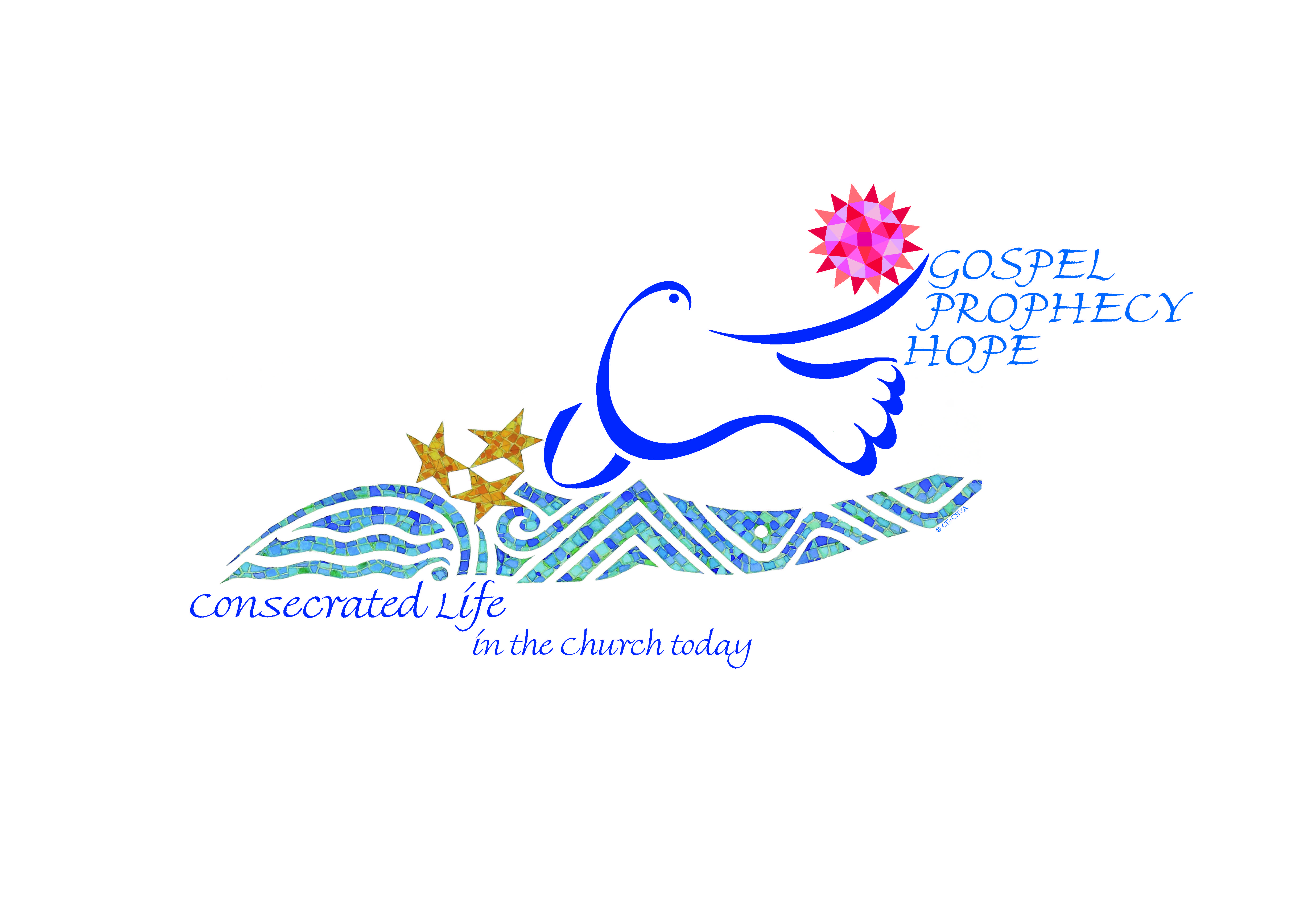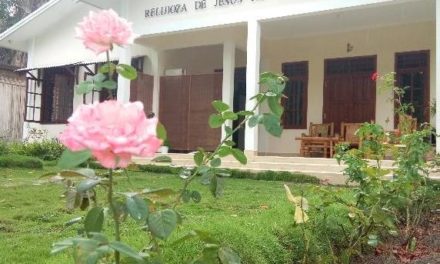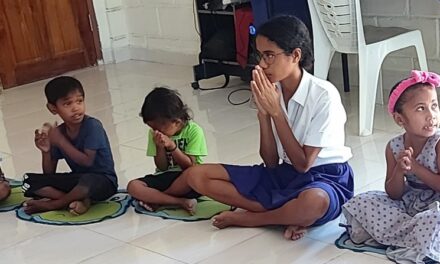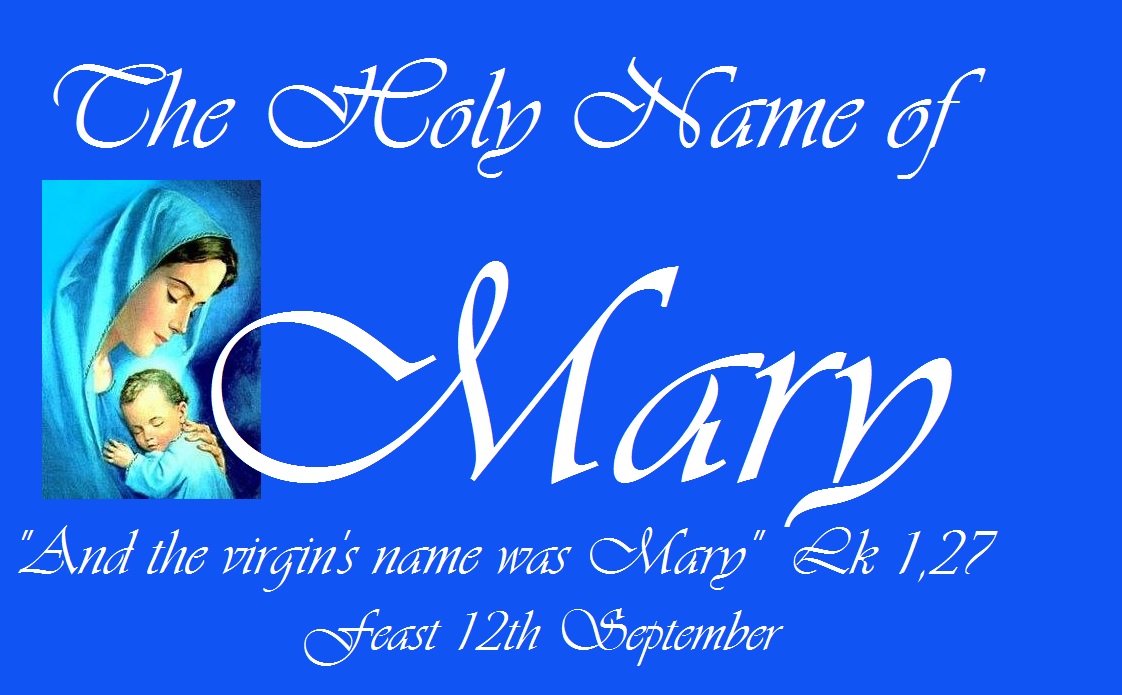“Consecrated persons are a sign of God in the different areas of life, they are leaven for the growth of a more just and fraternal society, they are the prophecy of sharing with the least and the poor. Thus understood and lived, consecrated life appears as what it really is: a gift from God, a gift of God to the Church, a gift of God to his People! Every consecrated person is a gift for the People of God on its journey”. Pope Francis.
To read: REJOICE A letter to consecrated men and women. A message from the teachings of Pope Francis
2015 Year of Consecrated Life: Calendar
OPENING
29 November 2014:
Prayer Vigil, Papal Basilica of St.Mary Major 7:00 PM.
30 November 2014, 1st Sunday of Advent:
Eucharistic Celebration, Papal Basilica of Saint Peter 10:00 AM.
CONCLUSION
30 January 2016:
Thanksgiving Prayer Vigil, Papal Basilica of Saint Peter.
2 February 2016:
World Day of Consecrated Life Eucharistic Celebration, Papal Basilica of Saint Peter.
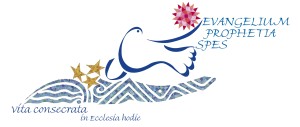 The Logo for the ‘Year of Consecrated Life’
The Logo for the ‘Year of Consecrated Life’
Consecrated life in today’s Church
Gospel, Prophecy, Hope.
A dove supports on one wing a polyhedral globe, and while resting on the water, it safeguards with the other wing three stars that arise from the water.
The Logo for the Year of Consecrated Life expresses through symbols the fundamental values of consecrated life. In it we recognize the “unceasing work of the Holy Spirit, who in every age shows forth the richness of the practice of the evangelical counsels through a multiplicity of charisms. In this way too he makes ever present in the Church and in the world, in time and space, the mystery of Christ” (VC 5).
In the lines that outline the form of the dove one can intuit the word ‘Peace’ in Arabic: this is a reminder that consecrated life is called to be the model for universal reconciliation in Christ.
The symbols of the Logo
The dove on the water
The dove is the classical symbol of the action of the Holy Spirit, who is the source of life and the inspirer of creativity. This is a flash-back to the origin of history: in the beginning the Spirit of God moved on the waters (cf Gen 1,2). The dove, gliding above a sea swollen with yet unexpressed life, symbolizes a patient and hope-filled fecundity, while the symbols around it reveal the creative and renewing action of the Spirit. The dove also evokes the consecration of the humanity of Christ through baptism.
The waters are made of mosaic fragments; they indicate the complexity and the harmony of the human and cosmic elements that are made to “groan” by the Spirit according to God’s mysterious plans (cf Rom 8, 26-27) so that they may converge into the hospitable and fruitful encounter that leads to a new creation. The dove flies among the waves of history, above the waters of the deluge (cf Gen 8, 8-14). The men and women, whose consecration was marked by the Gospel, have always been pilgrims among the nations; they live their various charismatic and diaconal presence like “good administrators of the multiform grace of God” (1Pt 4,10); they are marked by the Cross of Christ, even unto martyrdom; they journey through history equipped with the wisdom of the Gospel; indeed, a Church that embraces and heals all that is human in Christ.
The three stars
These stand for the identity of consecrated life as confessio Trinitatis, signum fraternitatis eservitium caritatis. They express the circular relationships found in the Trinitarian love, which consecrated life is called to live daily in the world. The stars also hint to the triple halo used in the Byzantine iconography to honor Mary, the Mother of God, the first Disciple of Christ and model and patron of every consecrated life.
The polyhedral globe
The small polyhedral globe symbolizes the planet with its myriad variety of nations and cultures, as explained by Pope Francis (cf EG 236). It is the breath of the Spirit that sustains it and leads it towards the future: an invitation to all consecrated persons “to become bearers of the Spirit (pneumatophoroi), authentically spiritual men and women, capable of endowing history with hidden fruitfulness” (VC 6).
The Headword
Vita consecrata in Ecclesia hodie (Consecrated life in today’s Church)
Evangelium, Prophetia, Spes (Gospel, Prophecy, Hope.)
The headword provides a further highlighting of the identity and prospective, experience and ideals, grace and journey that consecrated life has lived through and is still living within the Church as people of God, as it journeys together with the different nations and cultures toward the future.
Evangelium: this indicates the fundamental rule of consecrated life, which is the “sequela Christi as taught by the Gospel” (PC 2a). First of all as “a living memorial of Jesus’ way of living and acting” (VC 22), and then as vital wisdom in the light of the multiple counsels that the Lord gave to his disciples (cf LG 42). The Gospel shows the way ahead and is a source of joy (EG 1).
Prophetia: reminds us of the prophetic character of consecrated life, which “takes the shape of a special form of sharing in Christ’s prophetic office, which the Holy Spirit communicates to the whole People of God” (VC 84). This is an authentic prophetic ministry that is born from the Word and is nourished by the Word of God when this is welcomed and lived out in the various circumstances of life. This function is carried out through courageous denunciation and in announcing new ‘visits’ by God; also, “through the exploration of new ways to apply the Gospel in history, in expectation of the coming of God’s Kingdom” (ibid.).
Spes: reminds us of the ultimate fulfillment of the Christian mystery. We are living through an era that is characterized by widespread uncertainties and a lack of projects with a long-term vision: hope is needed in a context of cultural and social fragility, at a time when the horizon is dark because “it often seems that the signs of God’s presence have been lost from sight” (VC 85). Consecrated life is permanently projected toward the eschatology: it witnesses that every hope will eventually have its definite fulfillment, and transforms the waiting “in work and mission, that the Kingdom may become present here and now” (VC27). As a sign of hope consecrated life needs to be close to people and to show mercy; to be a paradigm of a future free from all kinds of idolatry.
“Encouraged by the charity that the Holy Spirit pours in our hearts” (Rm 5,5) the consecrated persons are therefore called to embrace the universe and to become a memorial of the Trinitarian love, catalysts of communion and unity, praying sentries on the peak of history, and to become one with humanity in its anxieties and in its silent search for the Spirit.
The artist that designed the Logo for the Year of the Consecrated Life
The creation of the Logo for the Year of the Consecrated Life was entrusted to the artist CARMELA BOCCASILE of the Dellino Art Studio, founded in 1970 (Bari – Rome, Italy) by Lillo Dellino and Carmela Boccasile.
For these artists, painting is an ‘icon’ both in the formal and in the original sense; that is, it is an invitation, an encounter and a dialogue. Every artistic symbol is intended and lived as a window on the visible that intuits and introduces to the invisible: an icon that as a symbol transcends the idol and opens up to the divine. This is a concept that follows closely the indications that the Fathers of the Church, during the II Council of Nicaea (787), gave regarding sacred art.
Carmela Boccasile is an expert icon painter; she manages to interpret attentively the traditional concepts in a new and modern manner. She is famous for her attention to detail and for what one can dub as ‘a scruple for color use’: it is a scruple that seems to be a response to the icon’s invitation, and is made up of an attentive listening and of a search for the internal sound of colors. Apart from the work at the Studio, Carmela Boccasile dedicates much of her time to the elaboration of sacred icons that are inspired by the Catholic and Greek-Orthodox traditions; in particular she prefers to produce icons of Mary and St Nicholas. Carmela Boccasile’s artistic trait can be defined as one of “matter that bears the Spirit’ and as a ‘tonal counterpoint’.
Lillo Dellino, painter, graphic, photographer, and scene disigner (Bari, 1943 – Paris, 2013) – was a disciple of Maestro Nicola La Fortezza, the winner of numerous artistic prizes, the artistic director of exhibitions and art galleries, and a collaborator in scientific projects with Silvio Ceccato, Pino Parini and Maurizio Calvesi. He married C. Boccasile, and with his intelligence and forceful creativity, became her life companion as well as her art companion; together they kept searching for the Spirit. As a team, they acted for decades as consultants at the International Study Center of the St Nicholas Basilica in Bari, at the Petruzzelli Opera Theatre and other cultural and musical entities. They were invited by the Italian Episcopal Conference to embark on a pilot project intended to build new Churches. They made up an exceptional artistic tandem. Their son Dario is now following in their footsteps; apart from the artistic trait that his parents handed down to him, he is well prepared as a writer and scholar.
Through its work that was the fruit of a unique vital unity, this married couple, both artists, has contributed to an overhaul of the contemporary painting and graphic art in Italy, as well as to a search for the Transcendental, always faithful to the Christian tradition.
Source: www.vatican.va, CIVCSVA
